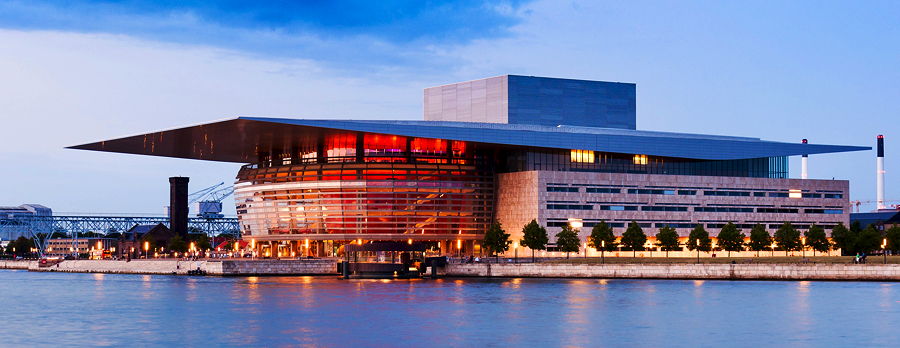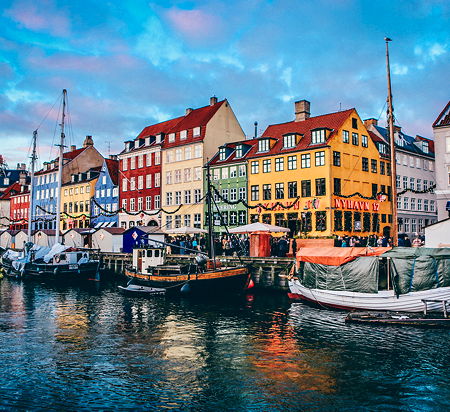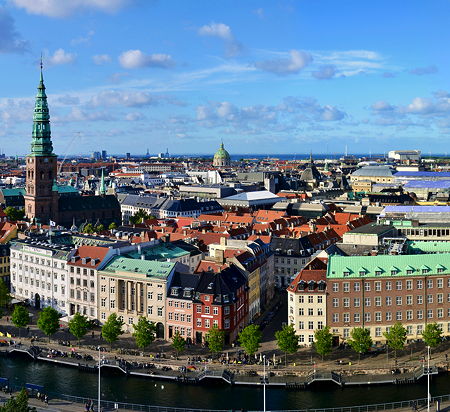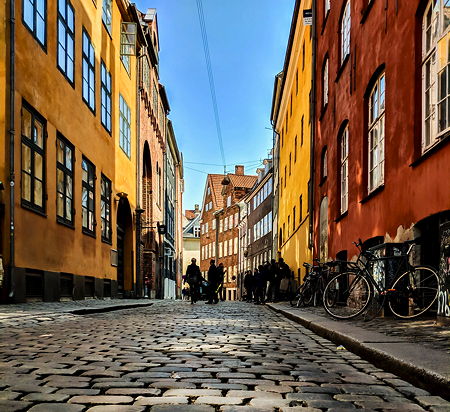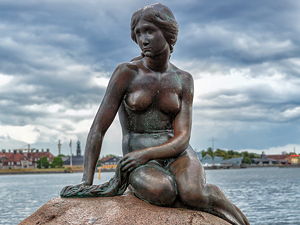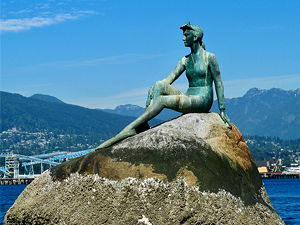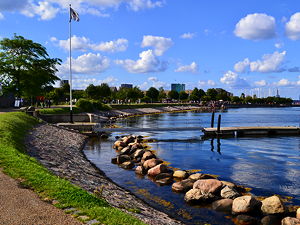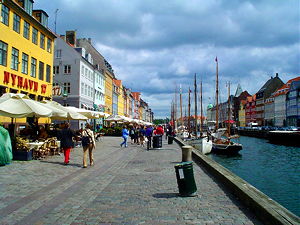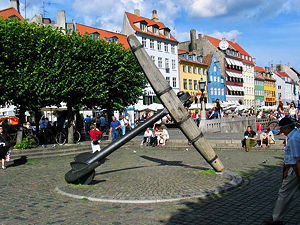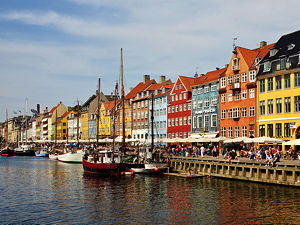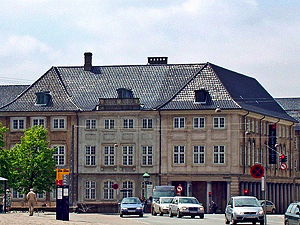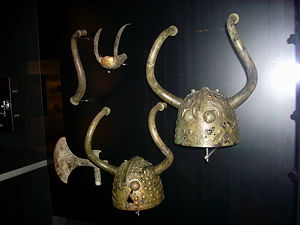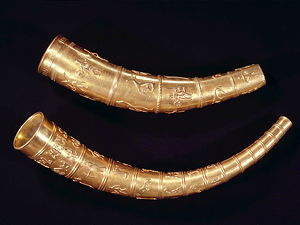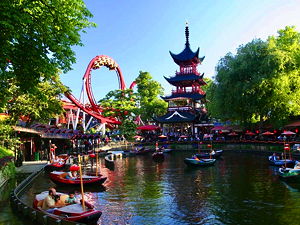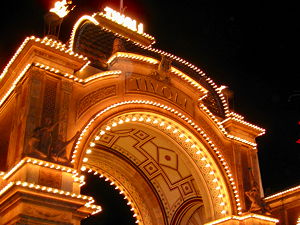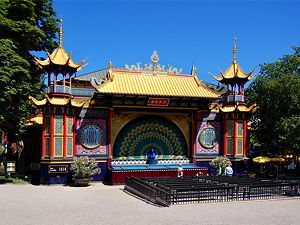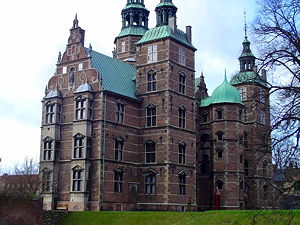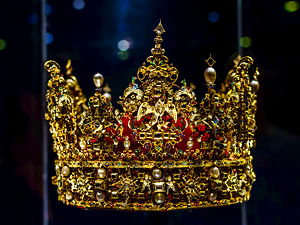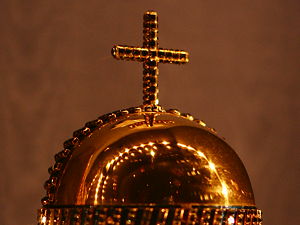Things to do in Copenhagen, Denmark
Culture, happiness and innovation define Copenhagen, the exciting Danish capital.
Bright colored houses pile on top of each other, a statue of a tragic fairy tale is venerated, and the halls of kings are open to the public. Such is the wonderful city of Copenhagen.
Beautifully designed in a way only the Danish know how to, the city is bike-friendly, cafe-friendly, pedestrian-friendly, and just all-around friendly. It’s no coincidence that it has been frequently named the happiest city in the world.
Besides architecture and amiable locals, Copenhagen is also one of the centers of European cuisine. With an avant-garde approach to gastronomy, it seems like restaurants in the city are on a never-ending quest to take your pallet to a new level of culinary heaven. There are also many wonderful museums, cultural institutions, and important landmarks. Included in the latter are, of course, the places that are tied to the royal family and the history of the nation.
While the city is fairly small for a capital, there is no shortage of things to do. Here are the top 5:
1. The Little Mermaid Statue
Based on the work of one of Denmark’s most celebrated writers, the statue has become the symbol of the capital.
Sitting on a rock, perpetually petrified by the side of the river, sits the melancholic figure of the Little Mermaid. This literary figure is the creation of Hans Christian Andersen and is one of the most beloved fairy tales in the entire world. The mermaid seems to look out into infinity, perhaps caught in her fervent love for a human prince that would —Disney version excluding—eventually lead to her tragic death.
Only 1.25 meters long, the statue is not by any means large. But what it lacks in size it makes up for in character and popularity. It has been one of the most visited landmarks in the city since 1913. Though there is not much to do besides take pictures of the statue and ponder on the tale behind it, it is an absolute must-see while in Copenhagen.
where? The statue is located on the picturesque Langelinie Promenade on the edges of the water. The closest bus station to it is Indiakaj, which is a 5-10 minute walk.
when? Because the melancholic mermaid sits outside and Denmark is notorious for its harsh weather, sunny days are the best time to visit. Except for the summer and late spring, it will be a bit chilly because it is so close to the water, but not terribly so. Of course, cold winter days when it’s raining are the worst times to pay a visit.
£$€¥ There is no cost involved with visiting the statue, save for transportation. The promenade is, however, lined with restaurants, bars, and cafes, so there are plenty of opportunities to spend if you so wish.
2. Nyhavn
Bright houses and wooden ships make this historical district one of the most popular in the city.
Chances are that the Nyhavn is the first image that pops into your head when you think of Copenhagen. First opened in the 17th century, it is one of the most iconic districts in the Danish capital. Its colorful houses line the harbour and have been beautifully preserved, as have been the old wooden ships that still bob up and down with the rhythm of the water.
Today its appeal lies beyond its aesthetic beauty and historical interest. There are now several bars, cafes, restaurants, and theaters that populate the Nyhavn and its surroundings. As such, there are just as many locals as there are tourists strolling around the district and enjoying everything it offers.
where? To get to the district, simply take bus route 66 and get off at the Nyhavnsbroen station. The bus will leave you right in the Nyhavn.
when? There really is no bad time to visit the Nyhavn, except perhaps very late at night, when it is cold and nothing is open. There are many day-time as well as night-time entertainment options, so you can enjoy it whenever you like. If you want to see the iconic houses in their full glory, however, it is recommended that you do so in the day-time, when you can appreciate their beautiful colours.
£$€¥ Visiting the Nyhavn costs as much as you wish it to. If you don’t want to spend any money, you may simply stroll along the canal and take in the sights. However, this is a great place to grab a bite, quench your thirst, or enjoy a party, so you will definitely be tempted to splurge.
3. National Museum of Denmark
Comprising the entirety of Danish history, the National Museum is considered one of the best in the continent.
With permanent exhibitions that go deeply into the history of the nation, there is no better way to get to know Denmark at its core. From pre-historic collections to temporary exhibitions on life in the 21st century, there truly are few museum collections as rich and complete. Of course, it’s not all just about Danish history. The museum also includes artifacts from several other countries.
Though you will not get to see everything in one visit, it is one of the landmarks that no tourist should miss, especially if they are history-enthusiasts. What’s best, there is also a children’s museum that is excellent and engaging, making this a perfect place to enjoy with the family.
where? The National Museum is located at the heart of Downtown Copenhagen,very close to Stroget. The closest bus station is Stormbroen, Nationalmuseet, which is serviced by multiple lines.
when? The museum opens Tuesday through Sunday from 10am to 5pm. Getting there early is recommended, as it will help you avoid long lines and large crowds.
£$€¥ Following the Danish tradition of keeping education free, there is absolutely no charge to enter the museum. With the money you save, you can buy yourself a nice souvenir at the gift shop.
4. Tivoli Gardens
Have a day of thrills and fun in this 19th century amusement park.
If you’re a fan of amusement parks and carnivals, this is your place. Opened in 1843, Tivoli Gardens carries a long-standing tradition and is one of the most popular amusement parks in Europe. With a roller coaster, various rides, and games, it is filled with constant fun.
But make no mistake, this isn’t just a place for carnival games. Inside, you will also find theaters and dance halls where live performances are given, an aquarium, various restaurants, and beautiful Japanese gardens. Clearly a very popular option for families, the gardens have also something for every traveler’s taste.
where? The gardens are located close to the city centre. The closest station is the Kobenhavn, which is the central train station of the city.
when? As with any outdoors activity, the amusement park is most pleasant in warm weather. However, the Danish cold doesn’t deter visitors from enjoying themselves any time of the year. Friday nights are especially popular because there are always fireworks.
£$€¥ Admission to the park varies between DKK 135 and DKK 145, depending on the day of the week and time of the year. Holders of the Copenhagen card receive free general admission. However, keep in mind that there will be charges for the rides, games, and food.
5. Rosenborg Castle
Peruse through this former royal palace and learn what life was like for a 17th century king.
Originally a summer country home for the royal family, the Rosenborg Castle is now one of the city’s main landmarks. It was completed by King Christian IV in 1633, and provides a window into the life of royals in the 17th century. You can walk around the Dutch Renaissance-style castle, seeing the lavish and beautiful chambers, rooms, and halls, and learning about the peculiarities of the time, like the speaking tubes used to communicate from one place of the palace to the other.
You can also see the royal collections, which include the crowns and jewels of the royal family. Perhaps the best part, however, is strolling around the immense and perfectly manicured King’s Gardens.
where? Rosenborg Castle is located not too far from downtown. There are several stations that surround it, the closest of which is perhaps Georg Brandes Plads, Parkmuseerne.
when? Opening days and hours for the castle vary greatly throughout the year. It is usually closed on national holidays, but not always, and depending on the time of the year, it opens or closes on Monday. For full details on the schedule, visit the Castle’s website.
£$€¥ Price of admission for the castle is DKK 115 and includes the gardens. Anyone under 17 years of age can enter free of charge. The same is applicable for holders of the Copenhagen card.
